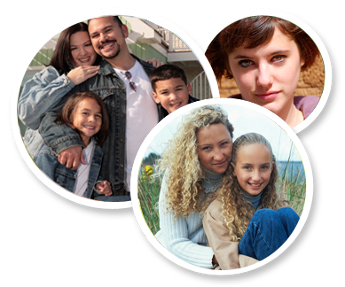What We Help
Expressive image therapy is a preventative and reparative form of treatment in special education, physical illness or injury, mental illness, and related issuses. It may be used to help in the treatment of:
|
• Learning Disabilities and Academic Underachievers
• Role and Value Conflicts incl. School Avoidance and Failure
• Oppositional Defiant Disorder and Conduct Disorder
• Social Anxiety/Social Phobia
• Stress Disorders
• Identity Confusion and Conflict
• Low Self-Concept and Low Self-Esteem or Sense of Self-Worth
• Mood Disorders, including Depression
|
• Physical Disabilities incl. Enabling the Disabled
• Negative Body Image
• Issues of Aging
• Obesity and Bariatric Recovery
• Eating Disorders incl. Anorexia, Bulimia, Binge Eating
• Compulsive Exercisers
• Sexual Promiscuity
• Victims of Neglect, Abuse, Violence
|
How We Help
We use the elements of image, namely dress, grooming, and body language including etiquette, to achieve therapeutic goals. Visual design in dress and grooming is a creative art form. Dress and grooming are creative expressions using the elements and principles of design to draw negative attention away from the body, to communicate, to improve or restore a client's ability to function effectively, and to regain his or her sense of personal well being. Increased awareness encourages emotional growth with a realistic body image. Guided by the expressive image therapist or specialist, we help clients to express themselves visually, using clothes and grooming as resources or tools, because they are:
• Visible, Key Factors in Daily Life
• Essential Parts of the Human Experience
• Universal Forms of Semiotic, Non-verbal or Visual Communication
• Natural Forms of Expressive Therapy
• Active Ways of Tapping the Imagination |
• Responsible for Setting the Boundaries for Social Interaction
• Creative Ways of Helping Clients Gain New Perspectives
• Props to Facilitate Problem-Solving Skills
• Resources Affecting the Achievement of Personal Goals |
Who We Help
Meeting with individuals, small groups, and families, expressive image therapy may be practiced in a variety of settings, including:
|

|
• Homes
• Schools
• After School Programs
• Churches
• Community Centers
• Cultural Institutions
• Workplaces
• Training Organizations
• Courts
• Shelters
• Housing Projects
|
• Detention Centers
• Correctional Facilities/Prisons
• Disaster Relief Programs
• Hospitals and Rehabilitation
• Nursing Homes and Hospices
• Adult Day-Care Centers
• Adolescent Group Homes
• Residential Treatment Centers
• Outreach Centers
• Mental Health Facilities
• Private Practice Settings
|
|
Why We Help
Expressive image therapy contributes to and promotes:
• general health, emotional
and physical well-being
• mental health |
• personal development or growth
and self-empowerment
|
• non-verbal communicataion and expression
• rehabilitation |
Expressive Image Therapy Benefits
• engages people more directly and immediately than do traditional verbal therapies.
• becomes more interesting, more fun, and more memorable than traditional verbal or talk therapies.
• offers insights and solutions generally not accessed through more linear verbal discussions.
• accelerates and deepens the psychotherapeutic process.
• eliminates lack of attention to dress, which preserves poor self-concept or self-esteem, as dressing cannot be avoided.
• exposes false identities and reveals the real self or authentic image identity.
• revitalizes existing professional practice in creative and unique ways.
• expands self-awareness and enriches self-expression in clients served.
• brings creative energy and imagination to the organizations offering treatment.
|

